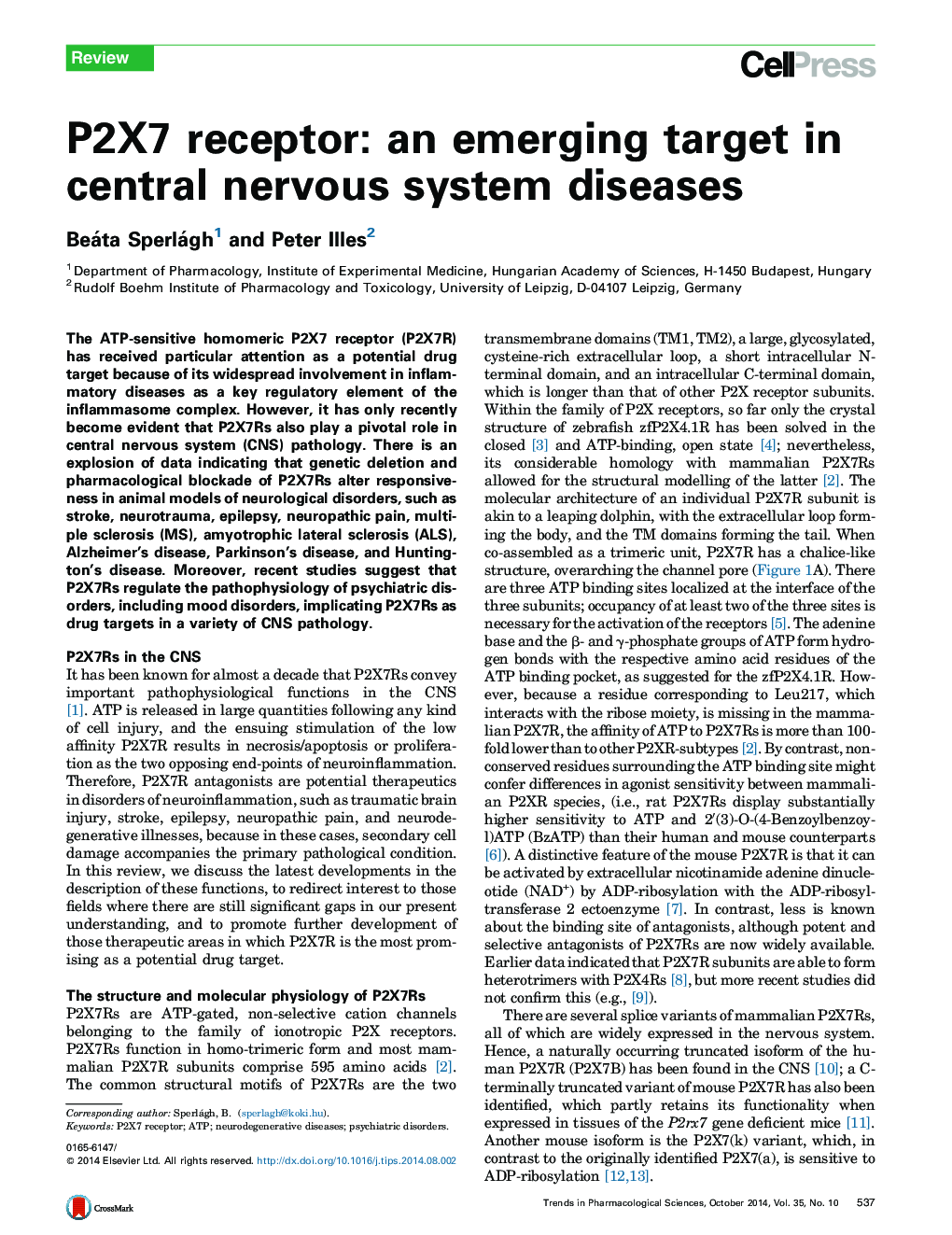| Article ID | Journal | Published Year | Pages | File Type |
|---|---|---|---|---|
| 2572659 | Trends in Pharmacological Sciences | 2014 | 11 Pages |
•P2X7 receptor channels allow the passage of both small and large molecular weight cations.•P2X7Rs are expressed on all different cell types of the CNS but their expression is highly dependent on external stimuli.•P2X7Rs contribute to various neurodegenerative diseases.•P2X7Rs may participate in the pathophysiology of psychiatric disorders.
The ATP-sensitive homomeric P2X7 receptor (P2X7R) has received particular attention as a potential drug target because of its widespread involvement in inflammatory diseases as a key regulatory element of the inflammasome complex. However, it has only recently become evident that P2X7Rs also play a pivotal role in central nervous system (CNS) pathology. There is an explosion of data indicating that genetic deletion and pharmacological blockade of P2X7Rs alter responsiveness in animal models of neurological disorders, such as stroke, neurotrauma, epilepsy, neuropathic pain, multiple sclerosis (MS), amyotrophic lateral sclerosis (ALS), Alzheimer's disease, Parkinson's disease, and Huntington's disease. Moreover, recent studies suggest that P2X7Rs regulate the pathophysiology of psychiatric disorders, including mood disorders, implicating P2X7Rs as drug targets in a variety of CNS pathology.
